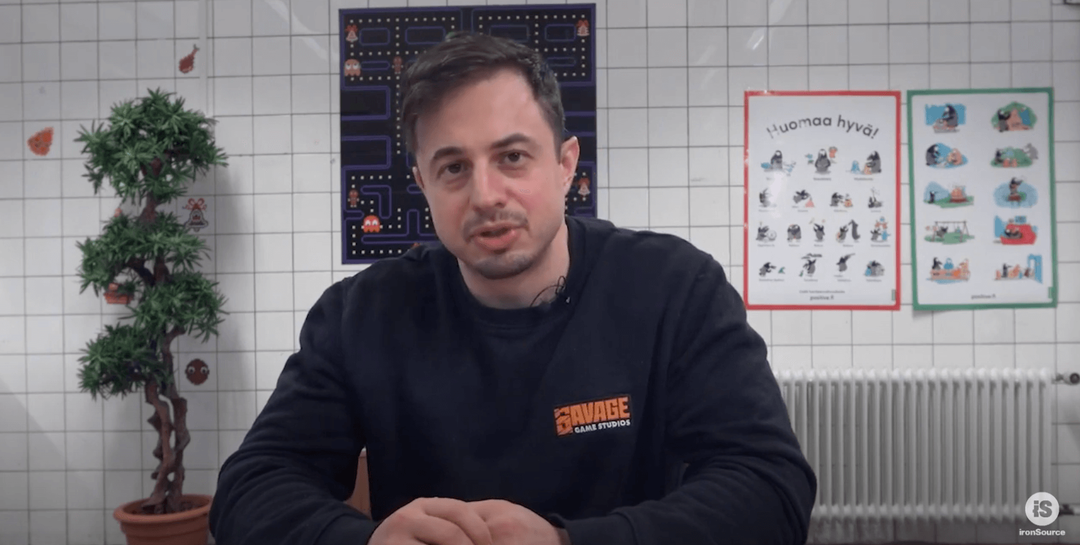At ironSource’s Gamefest 2019, Mishka Katkoff, who is the Head of Studio at Rovio and Founder of the Deconstructor of Fun blog, analyzed the growth of the gaming market and contrasts the approach and developments in the hyper-casual and action mid-core genres.
Here’s what he had to say:
- The growth rate of installs is falling, but at the same time, the spend on mobile games and time spent playing them is increasing.
- The amount of games entering the market since 2016 has plummeted, but the top is diversifying. Even though 65% of all IAP revenue belongs to the top 100 games, the number of games making over $5 million annually in IAPs is rising significantly every year.
- The top is evolving: half of the top 50 games have changed since 2017. While it’s hard for a game to succeed, it takes an average of 9 months for a game to launch and reach the top 100 grossing - a feat achieved by 28 games in the last year.
In today’s market, Mishka argues that for a company to get to the top and stay there, they need:
- Resources for user acquisition
- Strong live ops to ensure longevity at the top and a forever franchise, like exclusive content.
- A diversified portfolio. This is important for shielding yourself from market forces outside your control, and offers more opportunities for growth
- Focus: strive for genre mastery and become experts at what you do
Hyper-casual vs mid-core: The dichotomy
After presenting these market insights, Mishka then shows the differences in approach in these two genres to highlight how dynamic and diverse the trends in the gaming industry are.
Hyper-casual games
The hyper-casual party got started thanks to low entry barriers, low CPIs, and aggressive ad monetization. Using Voodoo as a case study, Mishka presents the four hallmarks of a successful hyper-casual studio:
- Tried and tested game design: Often inspired by someone else, the gameplay is straightforward, snackable, skill-based, and watchable (which increases IPM)
- Ship fast, ship a lot: Release several games a month, which is what Voodoo managed
- Grow games on a dime: Widen your audience, acquiring new users through creatives that lower CPIs, and cross promote across your other titles
- Aggressively monetize: Insert as many ads into your game as possible
Mishka then offers us a high-level analysis of where the hyper-casual market is now. First, he says the ability to sustain hit games is an elusive one, even among the top publishers. Voodoo’s success led other publishers to jump on the bandwagon and now, the likes of Say Games and Good Job have edged ahead. He adds that growth is stalling: while the last two quarters have been the biggest in terms of hyper-casual downloads, YoY growth is actually declining.
Finally, as a result of rising CPIs caused by market saturation, the hyper-casual space is set to adopt a hybrid monetization model in which IAPs will be used alongside ads. This will be achieved by adding depth or meta layers to hyper-casual core loops - Archero is a great example of a game doing this.
Action mid-core games
In this market, installs have declined over the last three years, with spikes caused by game releases like Call Of Duty Mobile, Knives Out, and PUBG. The rising production costs are making it harder to create mid-core games unless you have a large budget, leading to fewer big launches. However, the big, console-quality games have raked in $2.6 billion with 1.3 billion downloads. Mishka points out that in early 2018, industry veterans were skeptical of these games entering the mobile space, doubtful of the ability of cosmetics to generate significant revenue and of gamers’ desire to play such games on mobile devices. They were wrong, it seems.
Mishka suggests a winning formula for action mid-core games to succeed, and they contrast starkly to those he lists for hyper-casual.
- Launch big: CoD Mobile showed the virtues of this, but there are numerous games with quality gameplay, from Realm Royale to The Calling, who've vanished due to not launching big.
- Differentiation: Gameplay needs to be meaningfully differentiated from competitors. Just look at Fortnite, CoD, and PUBG - all have a distinct feel to their gameplay
- Influencer marketing: Influencers can be an extremely effective marketing tool. Supercell is one of the best examples in mobile: when they soft launched Brawl Stars, they got 600,000 iOS installs in Canada alone in a month thanks to influencer marketing efforts. Meanwhile, Epic Games are building a platform for influencers to help market their new store.
- Build a community: Interact with players, use influencers to be a voice of the players, make gamers feel like they’re part of a game’s development, which Apex Legends has done well.
Focusing on both ends of the spectrum - hyper-casual games and console-quality, action mid-core games - highlights how there’s no one way to succeed in the gaming industry, and that market trends are diverse and, sometimes, dichotomous.




